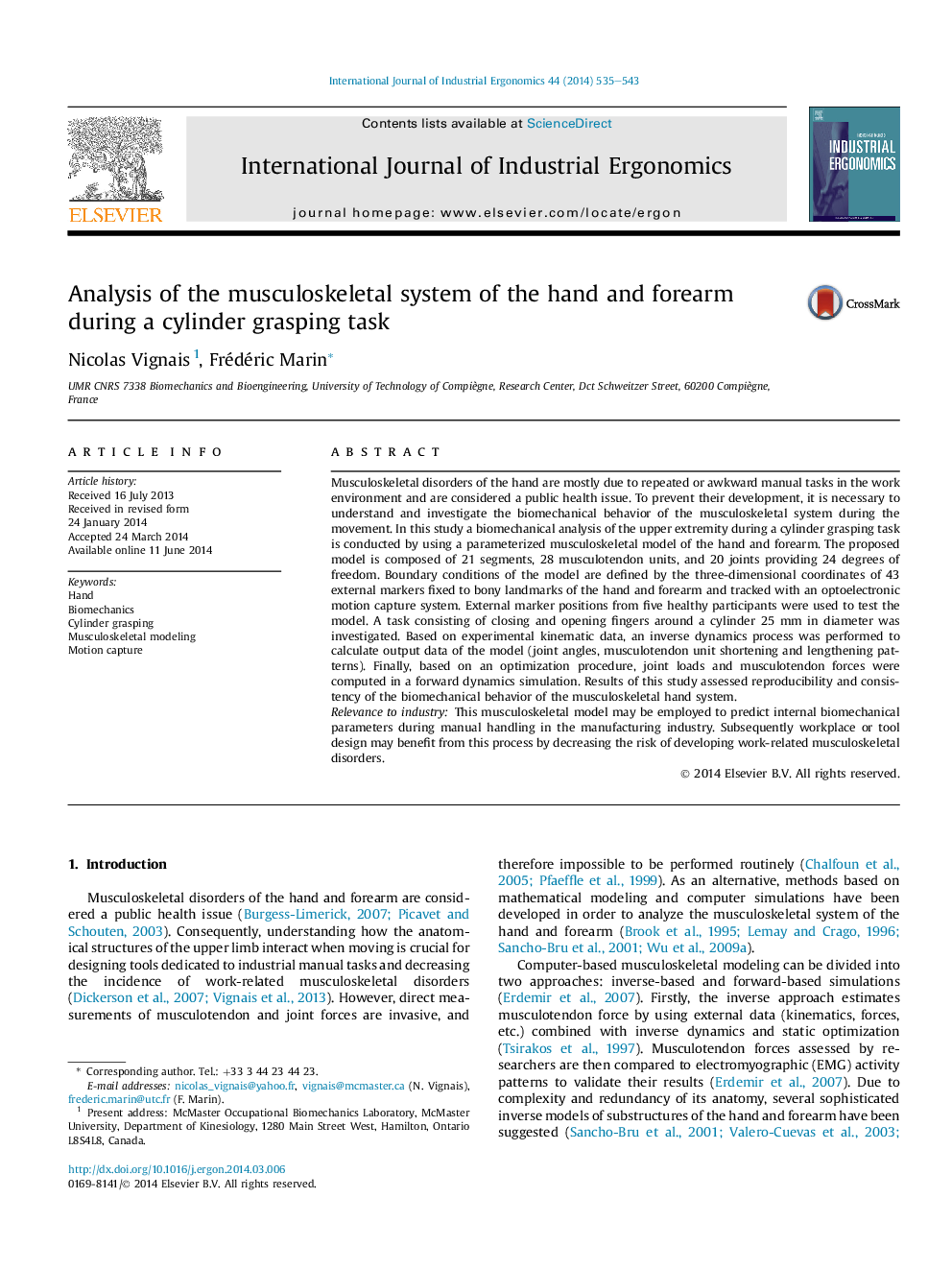| Article ID | Journal | Published Year | Pages | File Type |
|---|---|---|---|---|
| 1096061 | International Journal of Industrial Ergonomics | 2014 | 9 Pages |
•A musculoskeletal model of the hand and forearm has been developed.•This model uses real kinematical data to predict muscle forces and joint loads.•A cylinder grasping task is analyzed through this modeling process.•Reproducibility and consistency of the model are demonstrated.
Musculoskeletal disorders of the hand are mostly due to repeated or awkward manual tasks in the work environment and are considered a public health issue. To prevent their development, it is necessary to understand and investigate the biomechanical behavior of the musculoskeletal system during the movement. In this study a biomechanical analysis of the upper extremity during a cylinder grasping task is conducted by using a parameterized musculoskeletal model of the hand and forearm. The proposed model is composed of 21 segments, 28 musculotendon units, and 20 joints providing 24 degrees of freedom. Boundary conditions of the model are defined by the three-dimensional coordinates of 43 external markers fixed to bony landmarks of the hand and forearm and tracked with an optoelectronic motion capture system. External marker positions from five healthy participants were used to test the model. A task consisting of closing and opening fingers around a cylinder 25 mm in diameter was investigated. Based on experimental kinematic data, an inverse dynamics process was performed to calculate output data of the model (joint angles, musculotendon unit shortening and lengthening patterns). Finally, based on an optimization procedure, joint loads and musculotendon forces were computed in a forward dynamics simulation. Results of this study assessed reproducibility and consistency of the biomechanical behavior of the musculoskeletal hand system.Relevance to industryThis musculoskeletal model may be employed to predict internal biomechanical parameters during manual handling in the manufacturing industry. Subsequently workplace or tool design may benefit from this process by decreasing the risk of developing work-related musculoskeletal disorders.
Graphical abstractFigure optionsDownload full-size imageDownload as PowerPoint slide
